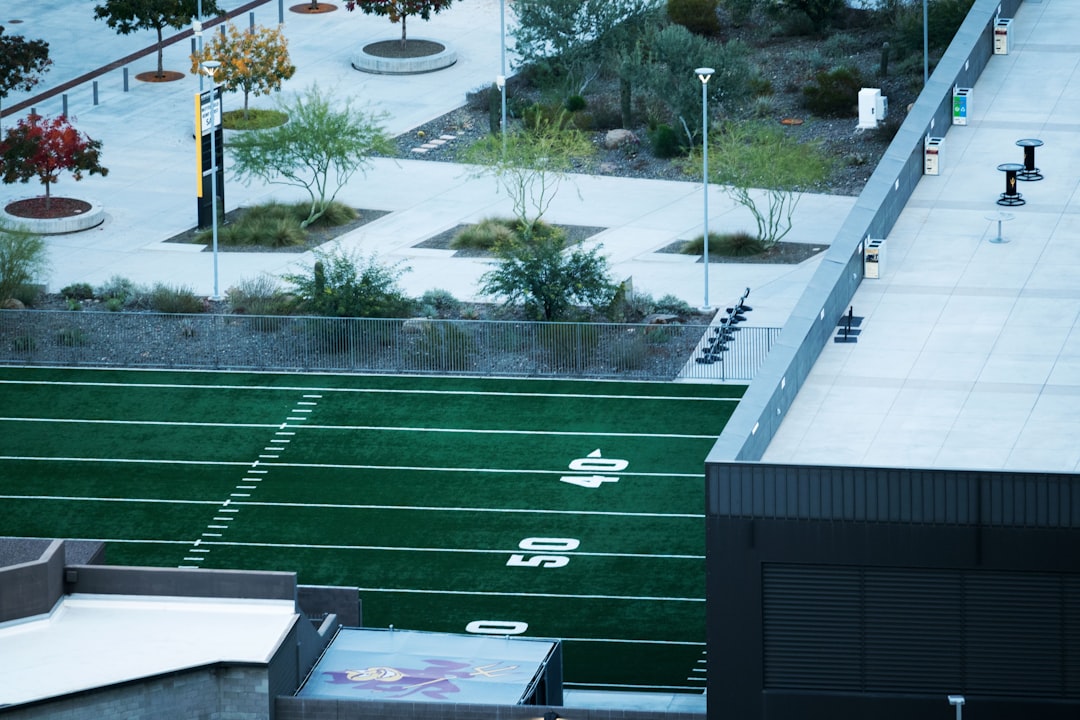A deep-dive into the concept of eLearning, its workings, and its benefits in the modern education landscape. We’ll explore what eLearning is, how it works, and why it’s becoming an increasingly popular mode of education.
Table of Contents
Live Online Learning Vs E-Learning: What Are The Differences
Key Takeaways Shortly
- Live Online Learning is a real-time learning format that offers interactive sessions, instant feedback and a more traditional classroom experience.
- E-Learning offers flexible and self-paced learning experiences, allowing learners to access the content anytime, anywhere.
- Live Online Learning provides a highly interactive learning experience through real-time discussions and instant feedback.
- E-Learning is characterized by its flexibility, allowing learners to fit their studies around their schedule and learn at their own pace.
- There are significant differences between Live Online Learning and E-learning in terms of delivery, interaction, flexibility and overall learning experience.
- eLearning, or electronic learning, is an innovative form of education that uses technology, particularly the internet, to facilitate teaching and learning processes. It has evolved significantly over time and takes various forms, such as online courses, webinars, and virtual classrooms.
- eLearning operates using specific technologies and internet-based platforms to deliver educational content. This content can vary widely, from text and visual aids to interactive quizzes and multimedia presentations. While eLearning has numerous benefits, including flexibility and accessibility, it also poses potential challenges, like lack of personal interaction and technical issues.
- In the modern education landscape, eLearning has gained significant importance. It is altering traditional education models by providing more accessible, customizable, and efficient learning solutions. Current trends in eLearning point towards a future with even more sophisticated and immersive online education experiences.
The world of education is changing, my friend. It’s no longer about sitting in a classroom, listening to a professor. We are now in the digital age where everything is available at the tip of your fingers. So it’s no surprise that learning has also gone digital. But, there are two major players in this digital learning field: live online learning and e-learning. What’s the big deal about them, you ask? Well, buckle up, because we’re about to take you on a ride into the realms of these two educational platforms. We’ll tell you all about the differences between live online learning vs e-learning, and by the end of this journey, you’ll be able to make an informed choice about which one is right for you. So, are you ready to dive in? Let’s get started then!
What is Live Online Learning?
Live online learning, sometimes called synchronous learning, is a type of learning where students and teachers meet in real time. This usually happens via video conferencing apps like Zoom or Google Meet. During these learning sessions, students can ask questions, and teachers can provide immediate feedback.
A fact that might surprise you is that according to a 2020 survey, 65% of teachers reported that live online learning increases student engagement more than traditional in-person classes. It is, however, important to note that it can be a bit challenging for students and teachers to adjust to this method of learning. But, honestly, isn’t it the same with every new thing we try?
That said, live online learning offers a more personalized learning experience when compared to e-learning. It gives students the chance to interact with their peers and teachers, just like they would in a traditional classroom setting. So, why not give it a shot?
How Does Live Online Learning Work?
Well, let’s get down to business. Live online learning, also known as synchronous learning, is a type of learning that happens in real-time. It’s a bit like traditional classroom learning, but, you know, online. The tutor and the students interact at the same time, regardless of the place they are located. Cool, right?
Now, the important thing is, this type of learning requires a stable internet connection and a quiet environment. So, if you’re thinking about enrolling in a live online course, you better make sure your Wi-Fi doesn’t give up on you halfway through a lecture.
One of the major upsides of live online learning is the immediate feedback you get from your tutor. Got a question? Just ask it right away. You don’t have to wait for an email response or a forum post. It’s like having a conversation, but with a lot more learning involved.
In this format, you can ask questions and get immediate answers. This dynamic interaction fosters a sense of community, enhancing the learning experience. The structure of live online learning also encourages immediate feedback and clarification, making it a practical choice for complex subjects.
On the other hand, this type of learning can be a bit challenging for people with busy schedules. The classes are scheduled at specific times, and you have to be available at those times to attend them. So, it’s not as flexible as, let’s say, watching a recorded lecture at your own pace.
Another thing to keep in mind is that live online learning requires a lot of self-discipline and motivation. It’s easy to get distracted when you’re sitting at home with your laptop. Remember, no one’s there to keep an eye on you, so you have to push yourself to stay focused.
So, to put it simply, live online learning is a great option if you prefer real-time interaction and immediate feedback. But you gotta make sure you have a stable internet connection and a good amount of self-discipline. Now, let’s move on to the next section, shall we?
How Does eLearning Function?
On the surface, eLearning might seem like a complex thing. But, in reality, it’s as simple as using a smartphone. You know, it’s just like browsing through your social media feed or ordering a pizza online.
Let’s get down to brass tacks. So, how does eLearning work exactly? Well, it’s all about connecting learners to learning resources via the internet. Simple as that. In other words, it’s like having a virtual classroom right in the palm of your hand.
A staggering, but true, fact is that in 2019, approximately 78% of learners used a mobile device for learning. This highlights the massive role technology plays in today’s educational landscape.
Now, let’s break it down a little bit. There are two main types of eLearning, synchronous and asynchronous. Synchronous eLearning is where students and teachers interact in real-time, think live video lectures and webinars. It’s kind of like, you know, traditional classroom learning, just without the physical classroom.
On the flip side, asynchronous eLearning allows students to learn at their own pace. This means you can watch that lecture or complete that assignment whenever it suits you. So, if you’re a night owl, you can learn at 2 am without any problem.
Ultimately, eLearning platforms provide a flexible and accessible way for people to learn. Whether you’re a busy professional looking to upskill or a student wanting to learn at your own pace, eLearning is the way to go. So, next time you’re scrolling through your social media feed, why not switch it up and learn something new instead?
The Power of eLearning
eLearning, as we’ve discussed, is the utilization of electronic technologies to access educational curriculum outside the traditional classroom. It’s a method that’s been growing in popularity, especially in recent times. And why wouldn’t it? It’s flexible, accessible, and can be adapted to suit a wide range of learners.
It’s not just about watching videos on a screen, no-no. It’s about interactive sessions, virtual classrooms, and personalized learning experiences. It’s about bringing education to you, wherever you are, whenever you want.
And, well, isn’t that something? Education, right at your fingertips! No more worrying about missing lectures due to unforeseen circumstances. No more fretting about not being able to ask questions in a crowded classroom. With eLearning, you’re in control.
Interactive Participation in Live Learning
In live online learning, the interaction between the learner and the instructor is a significant aspect. This real-time engagement creates an environment that closely mimics traditional classroom settings. The instructor can adapt the teaching pace, clearly explain concepts, and address inquiries promptly. Learners can actively participate, collaborate with peers, and receive instant feedback, fostering a dynamic learning experience.
Contrarily, E-learning offers limited interactivity. While it provides flexibility to learn at one’s own pace, the absence of real-time interaction might lead to a sense of isolation. The feedback loop is often delayed, which can affect the learning progress. Interactive elements such as quizzes and forums are present, but they cannot replace the engagement that live online learning offers.
Understanding the level of interaction required in your learning journey can help you choose between live online learning and E-learning. Consider your preferences, learning style, and the nature of the course before making a decision. It’s about finding the right balance between flexibility and interaction.
Effective Communication in Online Live Learning
The success of online live learning largely hinges on effective communication. In live sessions, instant feedback and interaction play a critical role in enhancing the learning experience. According to a study by the University of Wisconsin-Stout, learners tend to retain as much as 50% more material when learning online compared to traditional classroom methods.
In an online live learning setup, teachers and students can communicate directly in real-time. This promotes a more personalized learning experience. The teacher can adjust the teaching pace based on the learners’ understanding, which is a significant advantage over e-learning methods.
Moreover, it’s not only about the teacher-student communication. Online live learning also enables peer-to-peer interaction. Students can engage in live discussions, work on group projects, and learn collaboratively. This social aspect of learning is often missing in conventional e-learning platforms.
Furthermore, the availability of various interactive tools enhances communication in live online learning. Features like whiteboards, live polls, and breakout rooms facilitate active learning and make the sessions more engaging.
However, it’s essential to mention that the effectiveness of communication in online live learning also depends on the participants’ familiarity with the technology used. Hence, providing adequate technical support and training can significantly improve the overall learning experience.
Therefore, when it comes to effective communication in a learning environment, online live learning has a clear edge over traditional e-learning platforms. The ability to interact in real-time, the social aspect of learning, and the use of interactive tools, all contribute to making online live learning a more engaging and effective learning method.
The Interactive Element: Key Difference in Live Online Learning
Live online learning, you see, offers an interactive experience that e-learning, quite simply, cannot. It’s like comparing a live concert to a recorded album. Both can give you the music, but only one makes you feel part of the process.
A study by the National Survey of Student Engagement reveals that students involved in interactive learning are 1.3 times more likely to report higher levels of learning. It’s a fact, clear as day, that interaction can boost learning outcomes.
Live online learning allows, well, live interaction between students and teachers. An educator can address a student’s doubt instantly, and feedback is immediate. It’s like having a traditional classroom, only it’s online. This instant back-and-forth is absent in e-learning, where content is pre-recorded, and interaction is usually limited to forums or email.
When it comes to group activities, live online learning takes the cake. Students can collaborate on tasks in real time, fostering teamwork and enhancing their problem-solving skills. In e-learning, most tasks are individual and completed at the student’s pace, which might not always give the same team spirit vibe.
Let’s not forget the role of motivation. Live sessions can spark a sense of community, which can be a key motivator to log in and participate. In e-learning, the sense of isolation can sometimes, well, demotivate students, making them less likely to engage in learning.
Just to make it crystal clear, live online learning and e-learning both have their own set of advantages. The choice between the two depends on personal preference and learning style. But, when it comes to interaction and real-time engagement, live online learning takes the lead.
Wrapping Up the Differences between Live Online Learning vs Elearning
So, we’ve had a good and easy look, haven’t we, at the key differences, between live online learning and e-learning. We’ve discovered that each brings its own unique advantages to the table. Live online learning offers the opportunity, you know, for real-time interaction and immediate feedback, mimicking the traditional classroom environment virtually. E-learning, on the other hand, provides learners with the freedom to learn at their own pace, wherever and whenever they choose.
We’ve also learned, didn’t we, that the choice between live online learning and e-learning depends entirely on individual learning styles and preferences. Some folks prefer the structure and interaction of live online learning, while others thrive in the flexibility and autonomy of e-learning.
The future of education, it seems, is not a one-size-fits-all model, but rather a blend of different learning methods tailored to meet the diverse needs of learners.
There’s no right or wrong here, it’s about what works best for you. So, why not give both methods a try and find out which one suits you best? After all, the end goal is the same, isn’t it – to gain knowledge and grow.
So, go on then, embrace the world of online learning and discover a new way of gaining knowledge that best fits your lifestyle and learning style. Start exploring, yeah? Just remember, no matter the method, the power of learning is always in your hands.
FAQ
What is Live Online Learning?
Live Online Learning is a mode of learning that takes place in real-time, often facilitated by an instructor. This implies that learners and instructors are online at the same time, engaging in discussions, asking questions, or explaining concepts. This mode of learning leverages video conferencing tools to create an interactive environment that closely mirrors the traditional classroom setup.
What is eLearning?
eLearning, short for electronic learning, is the use of technology to access educational curriculum outside of a traditional classroom. It can include various formats like online courses, virtual classrooms, and digital collaboration among students and teachers. It has evolved over time with advancements in technology and has become an integral part of modern education.
What are the Key Differences between Live Online Learning and E-Learning?
The main differences between Live Online Learning and E-Learning lie in their delivery, interaction, flexibility, and learning experience. Live Online Learning takes place in real-time and requires simultaneous online presence of learners and instructors, offering a more interactive and collaborative learning experience. On the other hand, E-Learning provides a self-paced learning experience, offering greater flexibility in terms of when and where learning takes place. While E-Learning can also offer interactive elements, the level of interaction is typically less immediate and dynamic compared to Live Online Learning.
How can I decide whether Live Online Learning or E-Learning is better for me?
This largely depends on your personal learning style, needs, and circumstances. If you prefer structured learning with real-time interaction, live online learning would be suitable. If you need flexibility and can learn independently, E-Learning would be a better choice.
What are some benefits of Live Online Learning?
Live online learning offers real-time interaction, instant feedback and clarification, collaborative learning experiences, and a structured learning schedule. It can closely mimic the traditional classroom environment.
What are the advantages of E-Learning?
E-Learning offers numerous benefits, including flexibility in learning, accessibility to a wide array of resources, personalized learning experiences, and cost-effectiveness. It allows students to learn at their own pace and convenience, making it an excellent option for those who cannot attend traditional classroom settings.
What are the potential drawbacks of Live Online Learning?
Drawbacks may include dependency on stable internet connectivity, potential time zone issues for international learners, and less flexibility compared to E-Learning as learners need to adhere to the schedule.
What could be the possible challenges with E-Learning?
E-Learning may lack immediate feedback, real-time interaction and can lead to feelings of isolation. It also requires self-discipline and motivation to keep up with the course material.
How does Live Online Learning Enhance the Learning Experience?
Live Online Learning enhances the learning experience by promoting real-time interaction and feedback. This can make the learning process more engaging and effective, as learners can ask questions, discuss concepts, and clarify doubts immediately. Moreover, the sense of community that comes from learning with others can also motivate learners and enhance their overall learning experience.
Are Live Sessions Interactive Enough?
Yes, live sessions, by their very nature, are highly interactive. They provide opportunities for learners to engage in real-time discussions with instructors and peers, ask questions, share thoughts, and receive immediate feedback. This real-time interaction contributes to a more engaging and effective learning experience.
Does E-Learning offer Flexibility?
Indeed, one of the most significant advantages of E-Learning is its flexibility. With E-Learning, learners can access educational content at any time and from anywhere, making it ideal for those with tight schedules or who cannot attend traditional classroom-based lessons. This flexibility allows learners to adapt their learning to their individual needs and circumstances.
Can E-Learning Provide a Comprehensive Learning Experience?
Yes, E-Learning can provide a comprehensive learning experience. It offers learners the flexibility to learn at their own pace, revisit the material as often as needed, and learn from a variety of multimedia content. Additionally, many E-Learning platforms include interactive elements, such as quizzes and discussion forums, which can further enhance the learning experience. While the learning experience may be different from that of a live session, it can be equally effective when designed and implemented well.
What technology is used in eLearning?
eLearning utilizes a wide range of technology, from basic tools like email and chat forums to more sophisticated ones like Learning Management Systems (LMS), Virtual Learning Environments (VLEs), and Web conferencing software. These technologies facilitate content delivery, real-time communication, student collaboration, and progress tracking.
Why is E-Learning important today?
E-Learning is important today because it revolutionizes the traditional educational model, making it more flexible, accessible, and personalized. With the ongoing digitalization of various sectors, the importance of eLearning is continually growing. It’s expected to play a significant role in the future of education, with trends like mobile learning, microlearning, and AI-based learning on the rise.
Are there any technical requirements for both Live Online Learning and E-Learning?
Both methods require a good internet connection and a device like a computer, laptop, or a tablet. Live Online Learning may also require a webcam and microphone for interactive sessions. E-Learning may require specific software or apps depending on the course content.





















No comments yet.